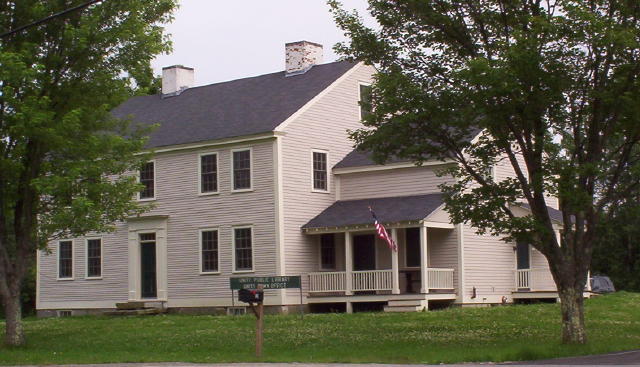Unity
New Hampshire

Chase Tavern
Prior to British colonization, the
Connecticut River valley was populated by bands of the Western Abenaki,
who lived in sometimes-large villages of longhouses. Depending on the
season, they would either remain near their villages to fish, gather
plants, engage in sugaring, and trade or fight with their neighbors, or
head to nearby fowling and hunting grounds. Later, they also farmed
tobacco and the "three sisters": corn, beans, and squash.
Colonization
eventually resulted in the establishment of the Province of New
Hampshire. Within that province, the area known as modern-day Unity was
part of a territory chartered in 1753 and named "Buckingham" after John
Hobart, 1st Earl of Buckinghamshire. Grants in the area were given by
both the early Massachusetts government and by Governor
Benning Wentworth,
which led to disputes. The town was incorporated as "Unity" in 1764
after amicable resolutions of the disputes were reached.
In the 1790
census, the town had 538 residents. Unity was on the Second New
Hampshire Turnpike, an important trade route chartered in 1799 that
connected Amherst, New Hampshire to Claremont. By 1810, the town had
1,044 inhabitants, with two grain mills, five sawmills, a clothing mill
and a distillery. Sheep farming was a principal business.
Research Volunteers
Roberta Callum
Roberta is
currently the Vice President of the Unity Historical Society
603-863-3468.
Robert Huntoon
Information on his family
from the Unity area.
Kathy Beals
"Early Families of Unity, New Hampshire and
Cemeteries of Unity, N. H."
by Kathy Beals
This book is also available in libraries in New
Hampshire and and across the country.
Also
available are copies of Unity censuses from 1790 - 1900; Kathy has
abstracted cemetery records
vital records, and
has located hundreds of probate records and deeds. Ms. Beals does no local
research as she lives in CA.
History of the Chase Tavern
Unity
Historical Society
1840 Census of Pensioners
Town of Unity
© 1996 - Present
All Rights Reserved